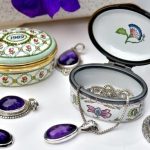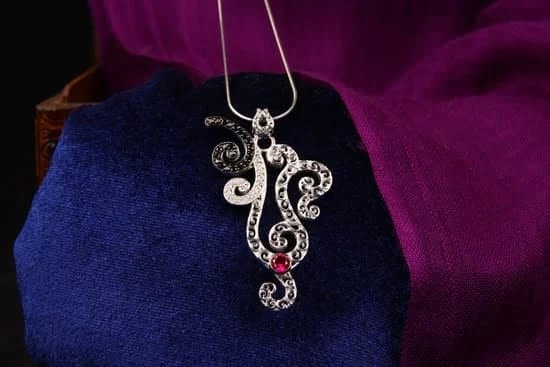Introduction
Platinum jewelry is considered a luxurious item, and is often chosen for heirlooms or other special occasions. It is praised for its beauty and its strength. But one of the key questions many people have before investing in platinum jewelry is: Does platinum jewelry scratch easily?
Indeed, many potential buyers of platinum jewelry want to know if it can stand up to everyday wear and tear. This article will answer this question by examining the nature of scratches on platinum jewelry and how easily they occur, highlighting how durable the metal really is. It will also discuss the care required to extend the life of platinum pieces and what should be done with scratched items to make them look new again. Finally, it will consider why people prefer platinum over gold or silver when it comes to high-end pieces.
Comparing the Durability of Platinum vs. Other Metals
Platinum jewelry is known to be incredibly durable, but that doesn’t mean it’s impenetrable. Just like any other metal jewelry, platinum jewellery can become scratched over time especially if not cared for properly. The good news is that despite how easily platinum can scratch, it typically does not tarnish or corrode. It’s also an incredibly strong metal so it takes quite a bit of force for the scratches to be visible and can actually be buffed away with a polishing cloth if necessary. When comparing the durability of platinum to other metals such as gold, silver and palladium – platinum is usually your best option when it comes to long lasting pieces as they’ll hold their original shape and brilliance longer than the others. Platinum is also much denser than these metals making it much more difficult to dent or bend which further contributes to its longevity. Overall, although platinum is susceptible to scratching because of how soft it is, if you take care of your jewelry by storing and cleaning it properly then you should have no problem keeping your pieces in pristine condition for decades to come!
Analyzing What Causes Scratch Damage in Platinum Jewelry
There are a few factors that can cause scratches to appear in platinum jewelry. A major factor is the hardness of the components of the jewelry piece. Platinum is a hard metal, which does magnify its resistance to scratches – but it’s not impossible for them to appear. Depending on what type of environment your platinum jewelry is exposed to, there may be unexpected factors that could cause damage such as reaching into an abrasive wall or surface or even simply coming in contact with costume jewelry with a lower threshold of hardness built into its construction. The other main source of scratching comes from repeated friction due to everyday activities such as dressing, playing sports or any activities that create pressure within the linkages and particles composing the piece itself. This could lead to abrasion with friction against other surfaces resulting in chipping, cracking, denting or even breaking of the pieces involved. In conclusion, platinum jewelry can still scratch although regular care and attention should help keep your precious material looking shiney and new for years to come!
Identifying the Benefits of Selecting Platinum Jewelry
The main benefit of selecting platinum jewelry is that it is a strong, durable metal. It resists most scratches and abrasions and can last for generations if maintained properly. Most people consider this to be a major advantage since other metals, such as gold or silver, can be damaged with everyday wear and tear. Platinum also has superior tarnish resistance compared to other precious metals and is more resistant to discoloration. When the piece of jewelry does become scratched, it can typically be polished back up to its original luster with minimal effort, making it look brand new again. Furthermore, platinum carries a weighty prestige; when someone wears a platinum piece of jewelry they are instantly displaying their wealth or status as its value remains relatively high due to its limited production.
Common Cleaning Mistakes that May Damage Platinum Jewelry
Platinum jewelry can be surprisingly fragile and can develop scratches and dents easily, so it requires special care. Unfortunately, cleaning of platinum jewelry is regularly performed incorrectly or with cleaners that are too aggressive and these common mistakes may cause permanent damage.
Some don’t know that liquid jewelry cleaners and strong detergents should never be used to clean platinum jewelry. These types of products are designed to strip away dirt, but they can also strip away the protective layer of rhodium plating on your platinum jewelry. It’s best to avoid using harsh chemical solutions as they can leave an oxide coating over time which captures dirt more easily, making your piece of jewelry look duller over time.
The safest way to clean platinum jewelry is by using a mild soap solution combined with warm water, gently rubbing the surface with a soft cloth or brush or dipping the piece into the solution. Afterwards, rinse thoroughly in cold water, then dry slowly with a soft polishing cloth made of natural cotton for further protection against scratches, patina tarnish and oxidation marks on the surface.
Common Myths About Platinum Jewelry
Platinum jewelry is known for its durability, so it’s a myth that platinum jewelry is easily scratched. In fact, when compared to gold jewelry, platinum is much more durable and scratch-resistant. It can even stand up to wear and tear on a day to day basis without losing its shine or shape. Additionally, the thicker the band of a particular piece of platinum jewelry, the less likely it is to be scratched. Therefore, if you’re looking for an accessory that will last multiple generations without any noticeable scratches or signs of wear, then investing in a quality piece of platinum jewelry is the way to go.
Conclusion
No two metals are exactly alike when it comes to scratch-resistance and durability, so it’s helpful to understand the properties of platinum when making the decision to invest in jewelry made with this precious metal. Platinum is considered one of the most durable metals and has a lifespan that exceeds 10 times that of gold. It is also hypoallergenic, making it ideal for those with sensitive skin, but should be taken into consideration if you’re looking for jewelry that won’t become scratched over time. While platinum jewelry does scratch easily, its ability to resist tarnishing makes it a great choice for those seeking an attractive piece of jewelry they can wear year after year. With proper care and maintenance, platinum jewelry can develop a beautiful patina that adds character and charm over time. Ultimately, when deciding between investing in gold or platinum jewelry, you should consider how often you plan on wearing it, what type of job you have which could increase your risk of scratching or wear and tear, and how much effort you want to put into polishing and caring for your piece. Copper-based metals may also offer a cost effective compromise between gold and platinum reliability.

Welcome to my jewelry blog! My name is Sarah and I am the owner of this blog.
I love making jewelry and sharing my creations with others.
So whether you’re someone who loves wearing jewelry yourself or simply enjoys learning about it, be sure to check out my blog for insightful posts on everything related to this exciting topic!





